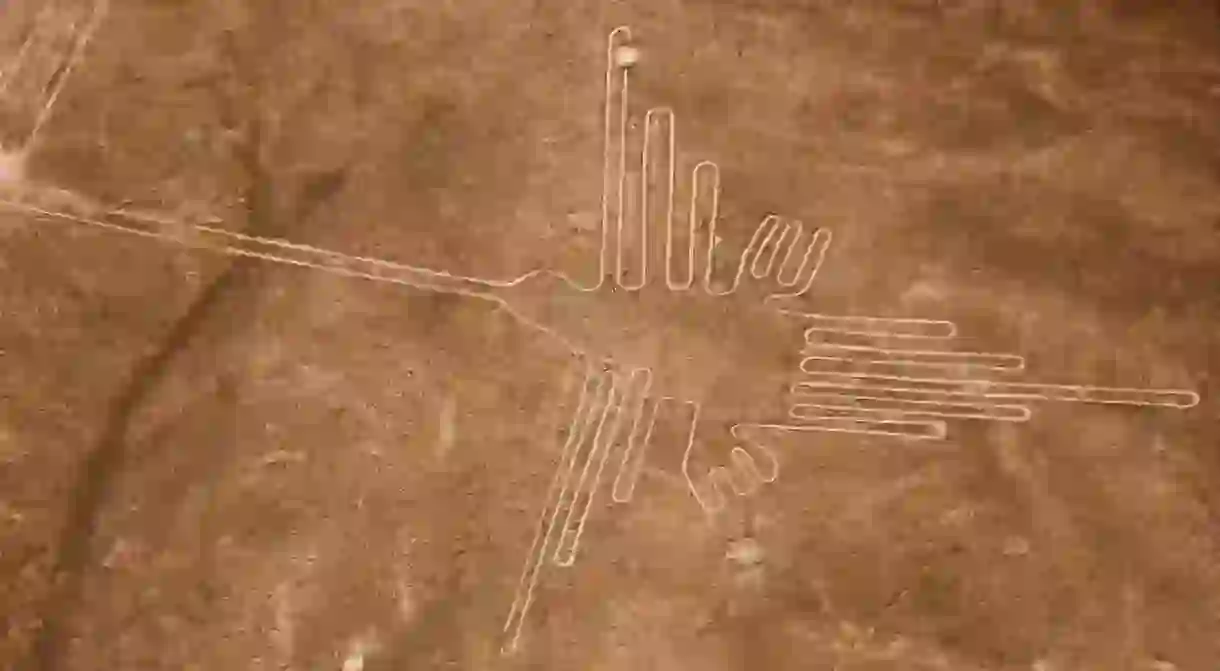Top Things to See and Do in Nazca, Peru

Most tourists head to Nazca in Peru with the sole intention of visiting the enigmatic Nazca Lines, a series of mysterious etchings that have puzzled archaeologists for eons. While these world-famous geoglyphs are certainly the city’s biggest attraction, there are plenty of other fascinating things to see nearby, including sand dunes, burial sites, and museums. Here are the best things to see and do during your trip to Paddington Bear’s homeland.
Fly Over the Nazca Lines
Historical Landmark
Among the most mysterious ancient wonders of the world are the Nazca Lines – and the best way to see them is from the air. More than 70 drawings in the sand depict animals including fish and llamas, and they stretch for hundreds of meters, eliciting wonder and awe. This is an intriguing archaeological site that many have studied, and yet the mystery remains as to how they were constructed and what their purpose was: appeasement of the gods, irrigation, or a prayer for rain? Catch a ride aboard a six-seater plane and if you’re not too nauseous, see if you can make out the shapes and draw your own conclusion.
See the Cantalloc Aqueducts
Architectural Landmark

A mere 2mi (3.5km) from Nazca, you’ll find the Acueductos de Cantalloc: a sophisticated irrigation system built by the locals between 200CE and 700CE. A series of underground aqueducts, trenches, and spirals built cleverly in stone, these subterranean canals permitted a limitless supply of water for crops and drinking water in the arid desert round about. Many visitors come here to see the spiral-shaped craters that served as wells and ancient pumps – and little wonder, as it’s a remarkable sight.
Meet the Mummies of Chauchilla Cemetery
Cemetery

If you’re a fan of the macabre, you’ll want to make a date at Chauchilla Cemetery, about half an hour by car from Nazca. Here you’ll find burial grounds and several well-preserved mummies, many with their long hair and nails still intact. The Nazca people preserved their relatives this well in the 9th century, observing ancient burial practices. The Peruvian government has stepped in recently to restore the site to its original condition, and good job too, as its inhabitants have waited a long time for a refurb.
Tour the Cahuachi Pyramids
Historical Landmark
14mi (23km) beyond Nazca, spend an afternoon exploring the Cahuachi sites, made up of 40 adobe pyramids. Once upon a time these were significant ceremonial, religious, and pilgrimage sites belonging to the Nazca people. These ancient mounds are still being studied and excavated by archaeologists today, and new artifacts are discovered regularly. Top tip: book a tour guide to take you around as getting access to the site can be complicated.
Browse the Museo Antonini
Museum

Get a glimpse of the daily life and rituals of the ancient Nazca people of Peru here at the Museo Antonini: a special archaeological museum in the city that’s home to several galleries displaying the art, ceramics, tools, musical instruments, and traditional clothing of the local cultures. This is also a great place to learn more about the Nazca Lines, with models and replicas of these extraordinary shapes (perfect if you’re afraid of flying or felt too airsick to make the most of the plane ride).
The Museo Maria Reiche
Museum
Maria Reiche (1903-1998) was a German mathematician best known for her research on the Nazca Lines, and this house-museum displays the tools she used for her studies. More unusual is her collection of relics, including human remains and skulls. There’s also a tattooed mummy, believed to be part of a human sacrifice ritual. Getting here can be tricky because of its remote location, so we recommend taking a colectivo (shared taxi).
Climb Cerro Blanco Sand Dune
Natural Feature

If you fancy a break from archaeological ruins – and a little outdoor adventure – take a look around the Cerro Blanco sand dunes. If you’re feeling courageous, you might like to try your hand at sandboarding down one of the highest dunes in the world (top tip: don’t use too much wax on your board or you’re going to fly down). Hike to the peak for amazing views of the valley, or various tour groups offer dune buggies, paragliding, mountain biking, and camping under the stars. Ask around locally for the best set-ups.
Learn About Local Ceramics at Cerámicas Emilia
Shop, Museum
Visit the family-owned Cerámicas Emilia, a traditional pottery shop and museum employing methods that have been passed down for generations. If you want something truly unique and different from your typical souvenirs, a stop here is a must. The pottery style here is inspired by the designs found on ceramics unearthed in this region, and the family is enthusiastic and more than happy to tell you about their craftsmanship, and the history of pottery-making.
Admire the Paredones
Historical Landmark, Ruins

Among the lesser-visited tourist attractions in Nazca, the Paredones definitely merit a visit. Off the beaten path, these Incan ruins are believed to have held a vital function in Nazcan society as a civic center. About a mile from the main plaza, these adobe ruins are made up of a series of rooms and patios. As a bonus, if you buy the boleto turistico (tourist ticket) this site is included in the price.
Climb the Nazca Lines Observation Tower
Architectural Landmark
If you fancy discovering the Nazca Lines from another perspective (one that avoids flying) the Nazca Lines Observation Tower is for you. It’s also a great option if you’re on a budget, as it’s a fraction of the cost of a plane ticket. Standing 42ft (13m) tall, it gives you awesome views of some of the 19sqmi (50sqkm) of etchings. You’ll need to climb four stairwells to get to the top (so unfortunately it’s not an option for those with access needs), but from the platform you can get a decent view of the two nearest geoglyphs: the tree and hands.













